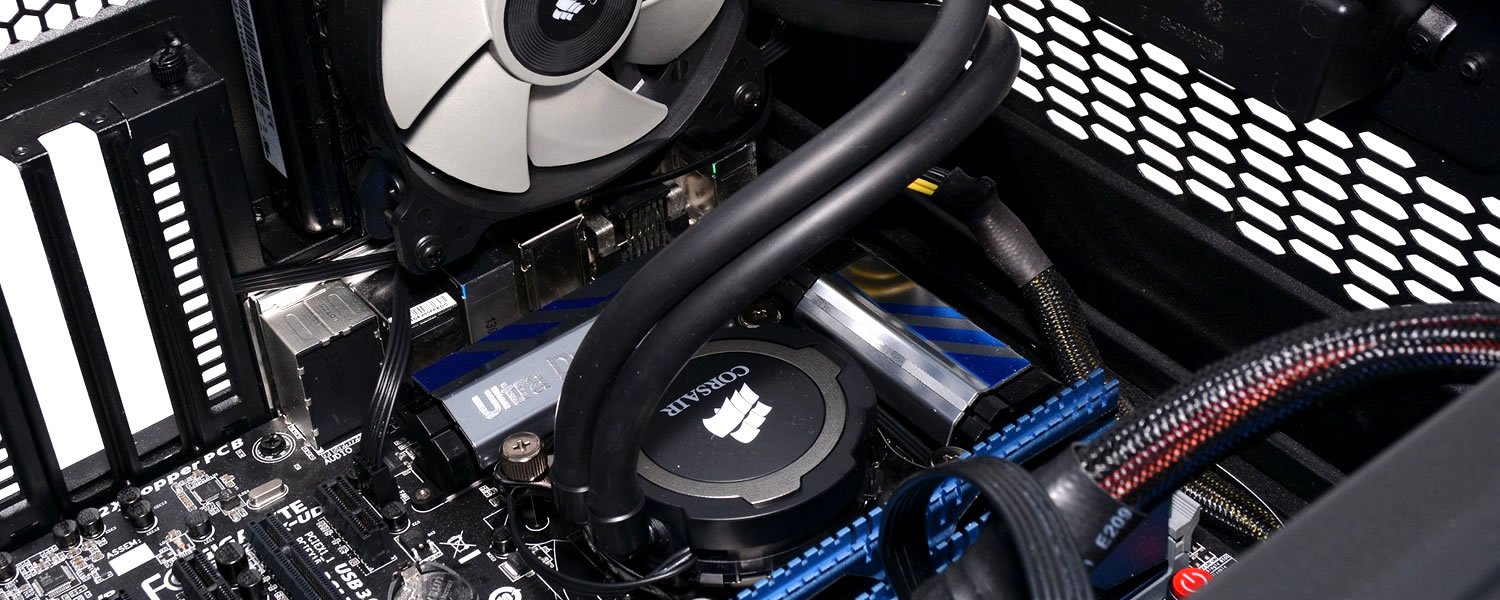A few short months ago we compared 10 of the best CPU air coolers and despite stiff competition from Thermalright and Silverstone, the successor to Noctua's legendary NH-D14 – the NH-U14S – may have made the strongest impression of all. Besides keeping our overclocked 4.3GHz Core i7-4960X at 53 degrees (30% lower than Intel's stock RTS2011AC), Noctua's solution was one of the quietest tested, generating only 44dB of noise.
Although we didn't think twice about stamping the NH-U14S with our Outstanding Award, we've since wondered how it would fare against a basic water cooling setup. On paper, closed loop systems simplify the process of diving into water cooling, being about as safe and easy to work with as air cooling while delivering much of the performance you'd expect from an elaborate custom loop at a fraction of the cost.
For example, Corsair's Hydro H75 is priced at $85, while Silverstone's Tundra TD02 is $120 – both of which we've picked up – and it's not like the Noctua's air cooler is cheap at $75. It doesn't seem like it would be hard to justify a $10 to $50 premium for an entry-level liquid setup, which should run cooler and quieter than the NH-U14S with few if any drawbacks. "Should" being the key word and the reason we're here...
To test the different cooling setups we ran idle and stress tests for 20 minutes to record the lowest and maximum values while maintaining an ambient room temperature of 21 degrees Celsius. Additionally, we remounted and retested each heatsink three times. Prime95 ensured that all four of the i7-4960X's processing cores were pushed to the max during the load tests. We'll show you the best result for each instead of averaging everything.
Temperatures were recorded with the same version of Everest Ultimate Edition as well as the same motherboard, processor and BIOS revision. We ran the i7-4960X at its default 3.3GHz in addition to an overclocked 4.3GHz configuration.
All tests were conducted using a horizontal motherboard orientation, positioned flat in the Cooler Master HAF-XB. Heatsinks with heatpipes were positioned so they spanned vertically. Our complete test system specs looked like this:
- Cooler Master HAF XB
- Intel Core i7-4960X (3.6GHz)
- Asrock X79 Extreme11
- 16GB DDR3 RAM
- GeForce GTX 780 Ti
- Samsung SSD 840 Pro 512GB
- OCZ Mk III Silencer 750w
- Windows 8.1 64-bit
Furthermore, we disabled features that would affect the results, including CPU Enhanced Halt (C1E), C3/C6 State Support, CPU Thermal Monitor, EIST and Turbo Boost.
Silverstone Tundra TD02 all-in-one liquid cooler
The Tundra TD02's radiator only has two fans but it looks massive because of it spans 278mm long and 70mm thick – 25mm of which is the fans. This size could cause compatibility issues in some cases, but we managed to avoid issues with Cooler Master's HAF-XB by mounting the Tundra TD02 in the enclosure's front panel.
Not only has Silverstone made the Tundra TD02's radiator extra thick, but it has also refined the cooler's fins, which are soldered against liquid piping to maximize contact.
Of course, the radiator is useless without a good water block, and Silverstone has also reworked things here as well. The Tundra TD02 has an all-aluminum block with a solid copper base.
Intel mounting brackets are attached out of the box for LGA775/1150/1155/1156/1366/2011 sockets. LGA2011 users have a quick and easily installation: you screw in four standoffs, cover the CPU heat spreader in thermal paste and then attach the water-block with four thumbscrews.






